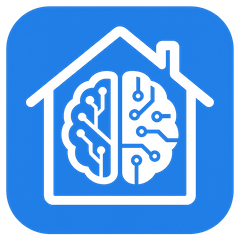Custom-Shaped PCBs Made Easy with Inkscape and Fritzing
By Clevr House on August 7, 2025
Tired of your electronic projects being stuck in boring, rectangular boxes? It's time to let your creativity shine by designing a Printed Circuit Board (PCB) that is as unique as your project. Whether it's a wearable shaped like a star or a badge in the shape of your company logo, creating custom boards is easier than you think.
Thanks to the seamless integration between the vector editor Inkscape and the beginner-friendly PCB tool Fritzing, you can turn any shape imaginable into a professional-looking circuit board. This guide will show you how.
Step 1: Prepare Your Layers in Inkscape
The magic of the Fritzing workflow lies in how it reads a standard SVG file. It looks for layers with specific names to understand what to do with your design. Setting this up first is the key to success.
-
Open the Layers Panel: In Inkscape, open the layers view by going to
Layer > Layers...or pressingShift+Ctrl+L. -
Create and Name Your Layers: By default, you'll have one layer. Rename it to
board. Then, click the plus (+) icon to create a new layer and name itsilkscreen.
It is critical that these names are exact: all lowercase. The board layer will define your PCB's outline and cutouts, while the silkscreen layer will contain all your logos, text, and graphics.
Step 2: Design Your Board Shape and Cutouts
Now, let's design the physical board on the correct layer.
-
Select the 'board' Layer: Click on the
boardlayer in the Layers panel to make it active. -
Create the Outline: Use Inkscape’s drawing tools to create your board's external shape. If you combine multiple shapes, be sure to merge them into one by selecting them and using
Path > Union. -
Add Cutouts: To create holes or internal cutouts, draw the cutout shapes on top of your main outline. Select the main outline first, then
Shift+Clickto select your cutout shapes. Go toPath > Difference. This will subtract the shapes, leaving perfect holes. -
Set the Color: Your final board shape must be a single, unified path. Select it and set its fill to solid black with no stroke. Fritzing uses this black shape to generate the board outline.
Step 3: Add Your Silkscreen Graphics
Silkscreen is the ink layer on a PCB used for text and logos. This is where you can add personality to your board.
-
Select the 'silkscreen' Layer: Click on the
silkscreenlayer in the Layers panel to make it active. -
Add Your Graphics: Create any text, logos, or component labels you want.
-
Set the Color: For your graphics to show up clearly on a standard green PCB, select them and set their fill to white.
Step 4: Save Your Master SVG File
This step couldn't be simpler. Unlike other PCB programs that require special export formats, Fritzing works directly with Inkscape's native file type.
Go to File > Save As... and save your design as an "Inkscape SVG (*.svg)". That’s it! Your single SVG file now contains all the information Fritzing needs.
Step 5: Load Your Custom Shape into Fritzing
Now, let's bring your design to life in Fritzing.
-
Open Fritzing's PCB View: Switch to the "PCB" view in your Fritzing project.
-
Select the PCB: Click on the default rectangular green board to select it.
-
Load Your Image: In the Inspector panel on the right, you'll see properties for the PCB. Click the "load image file" button and select the SVG file you just saved.
Fritzing will instantly process your file, replacing the standard rectangle with your custom-designed board shape and overlaying your white silkscreen graphics on top. You can now place your components and route your traces within the creative canvas you designed. ✨
